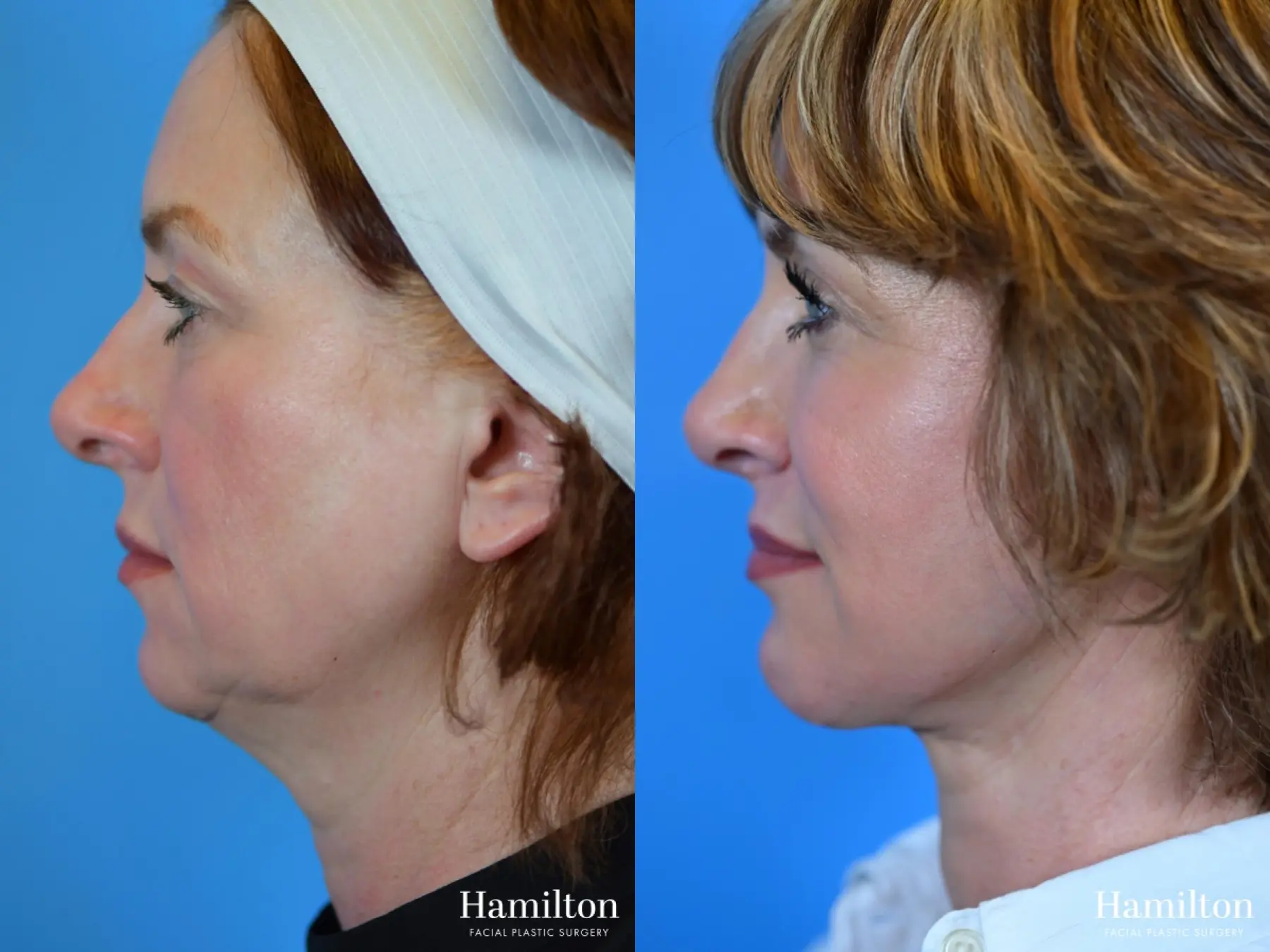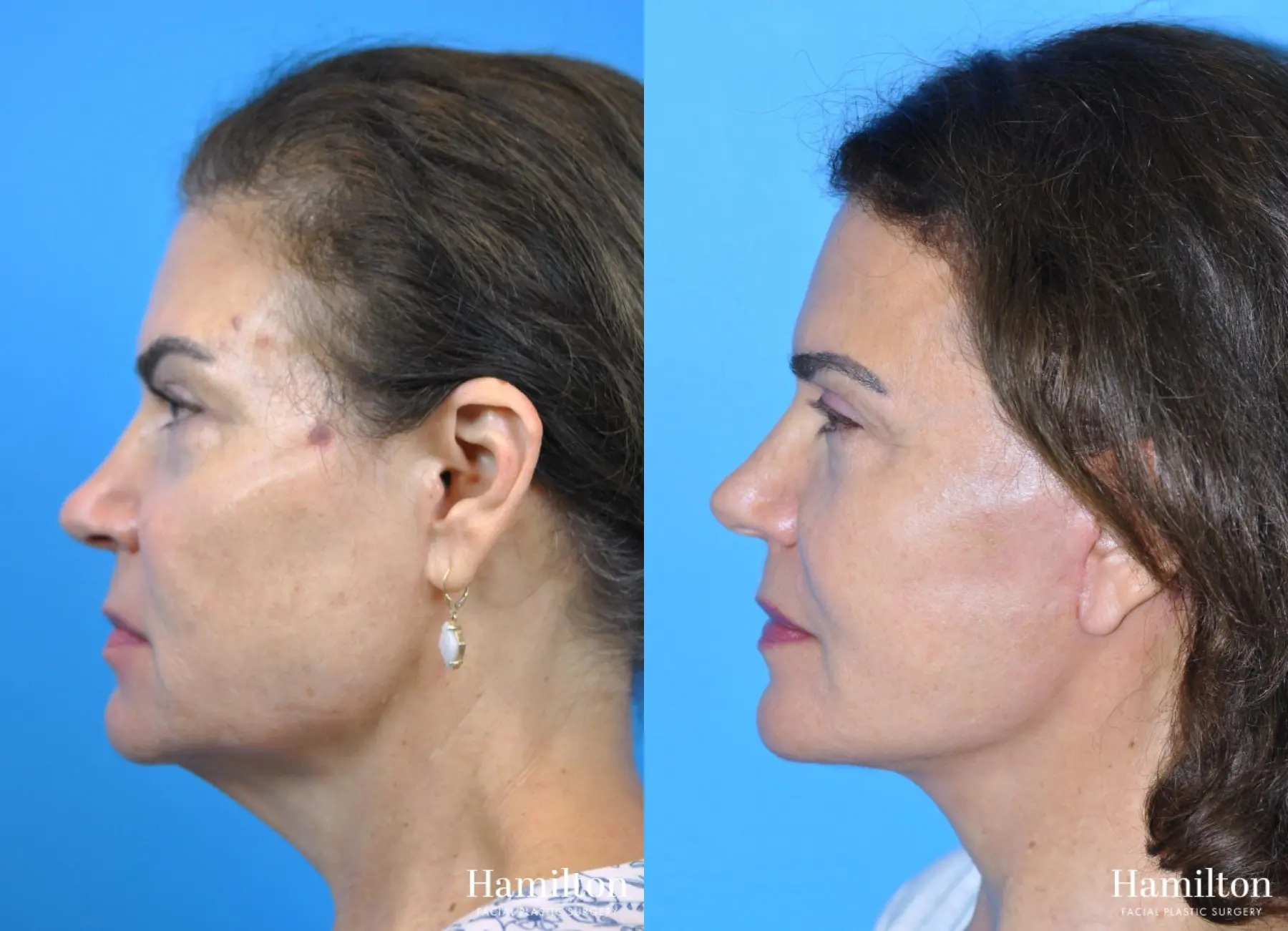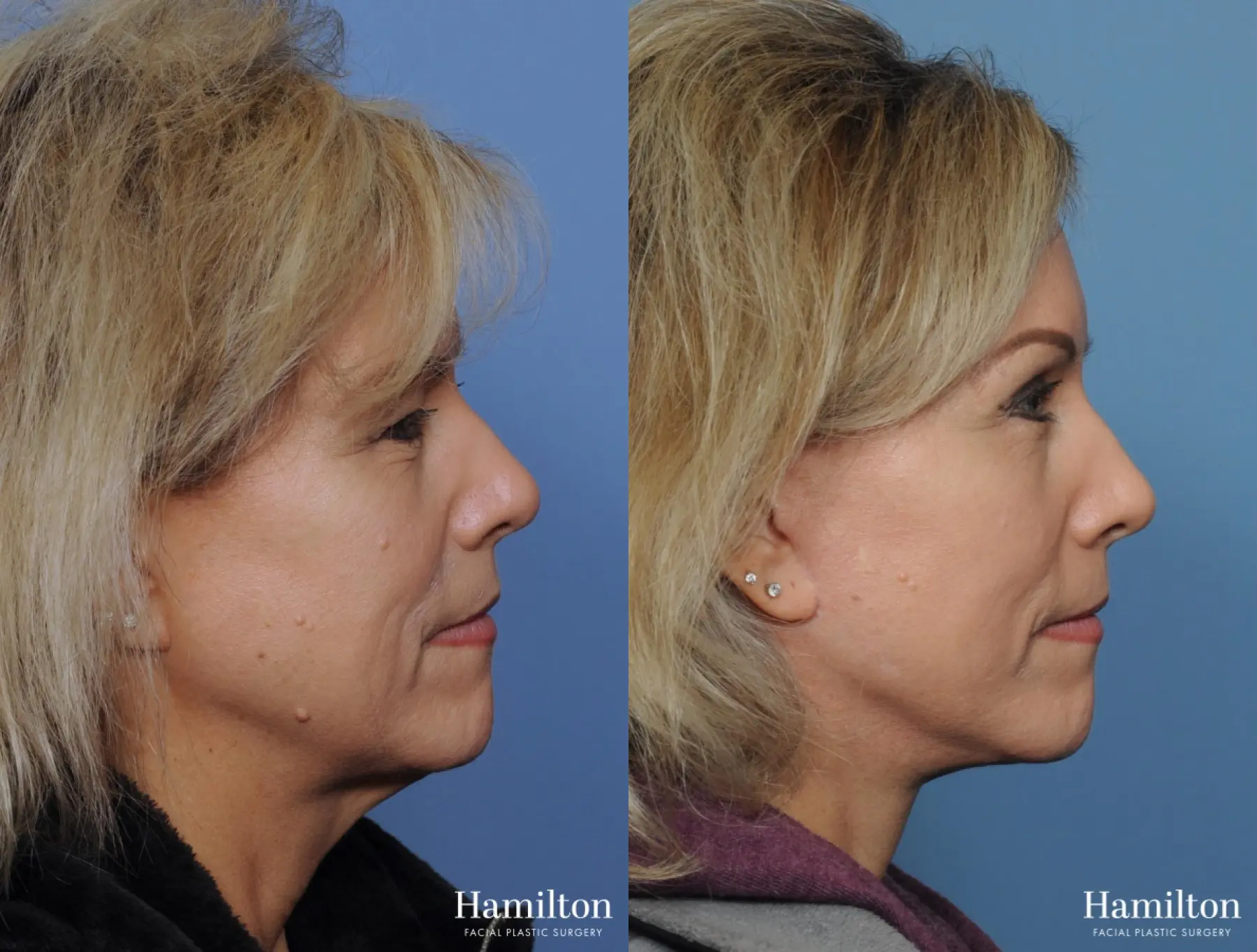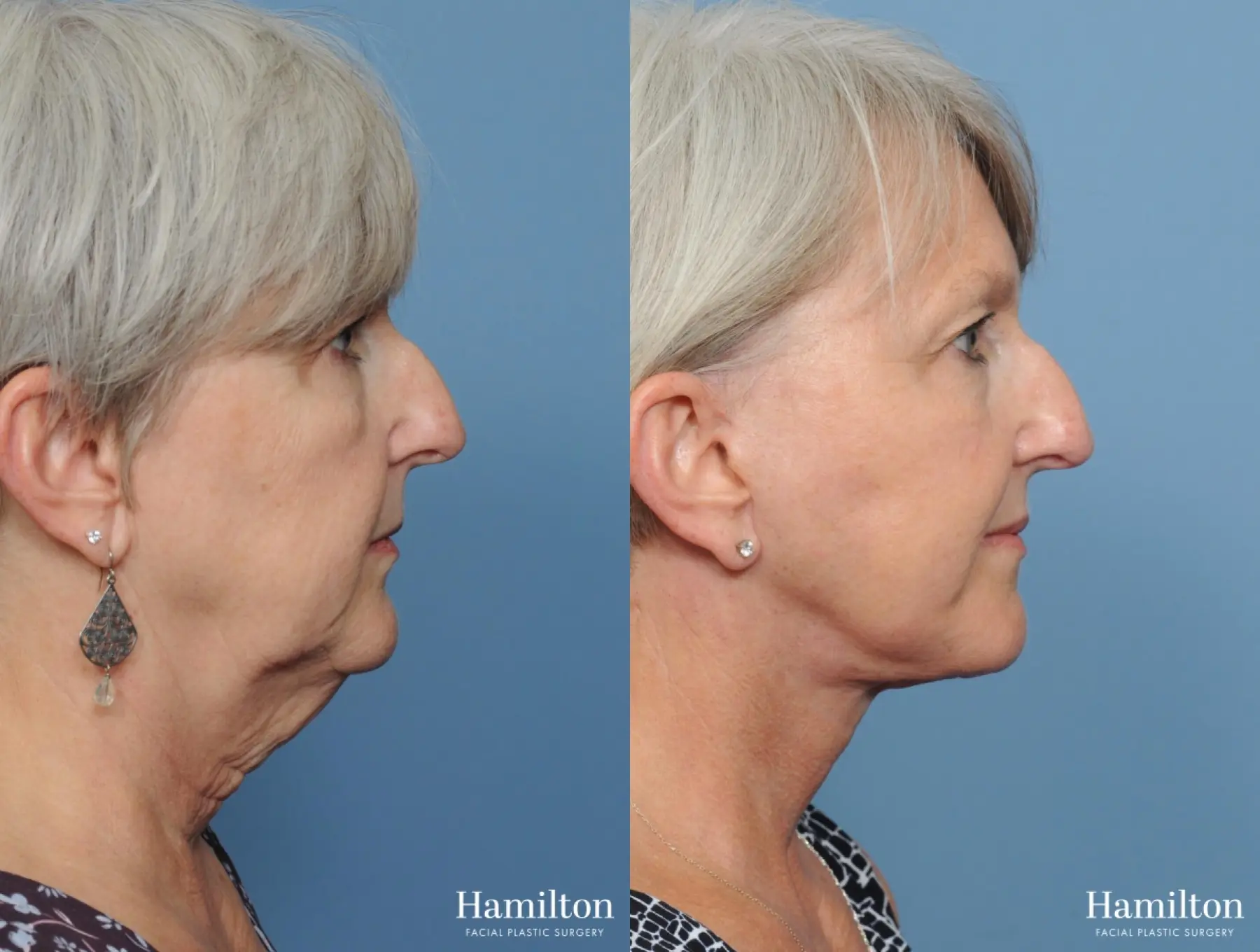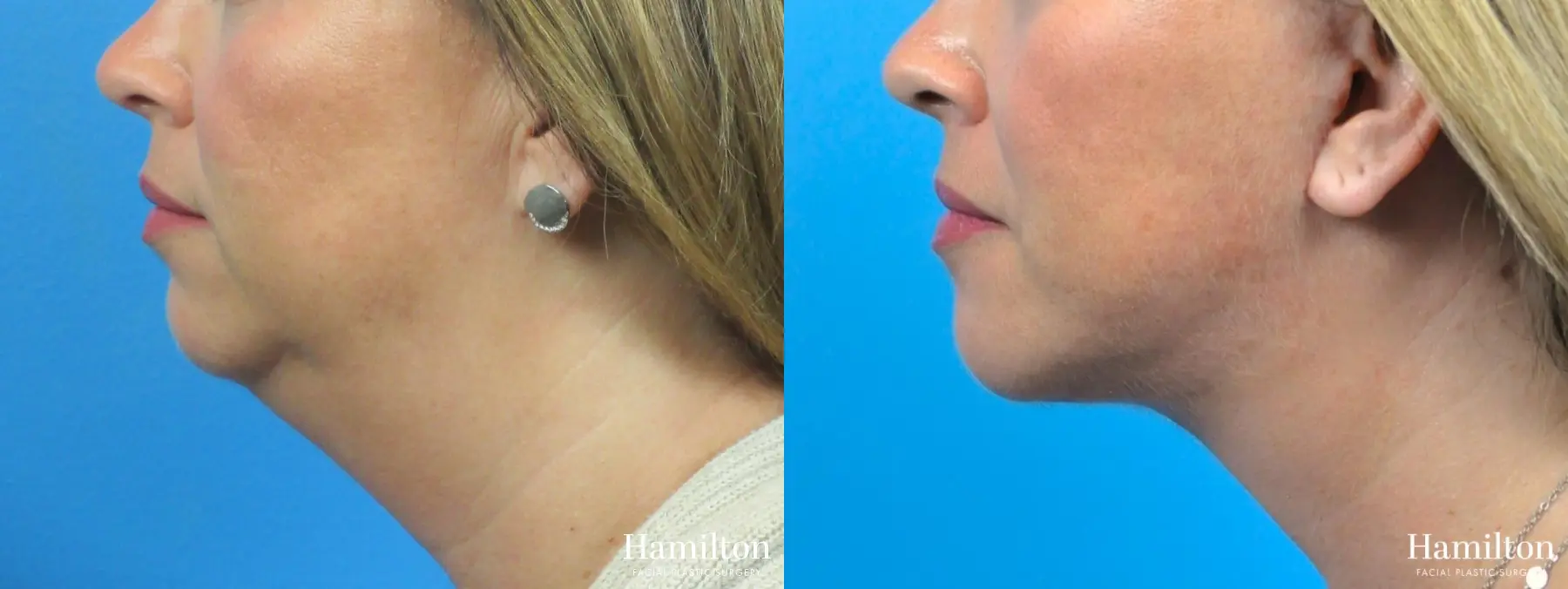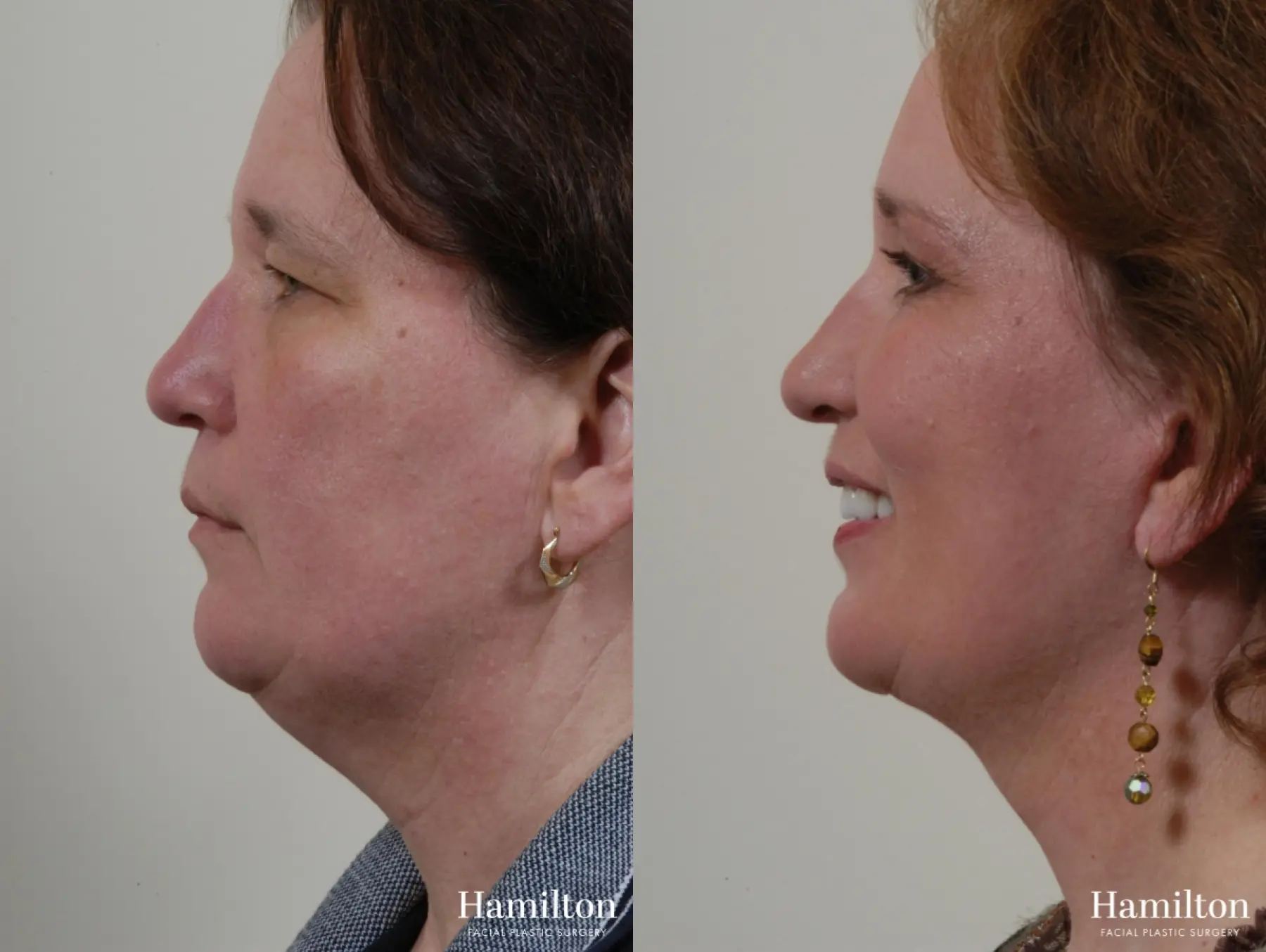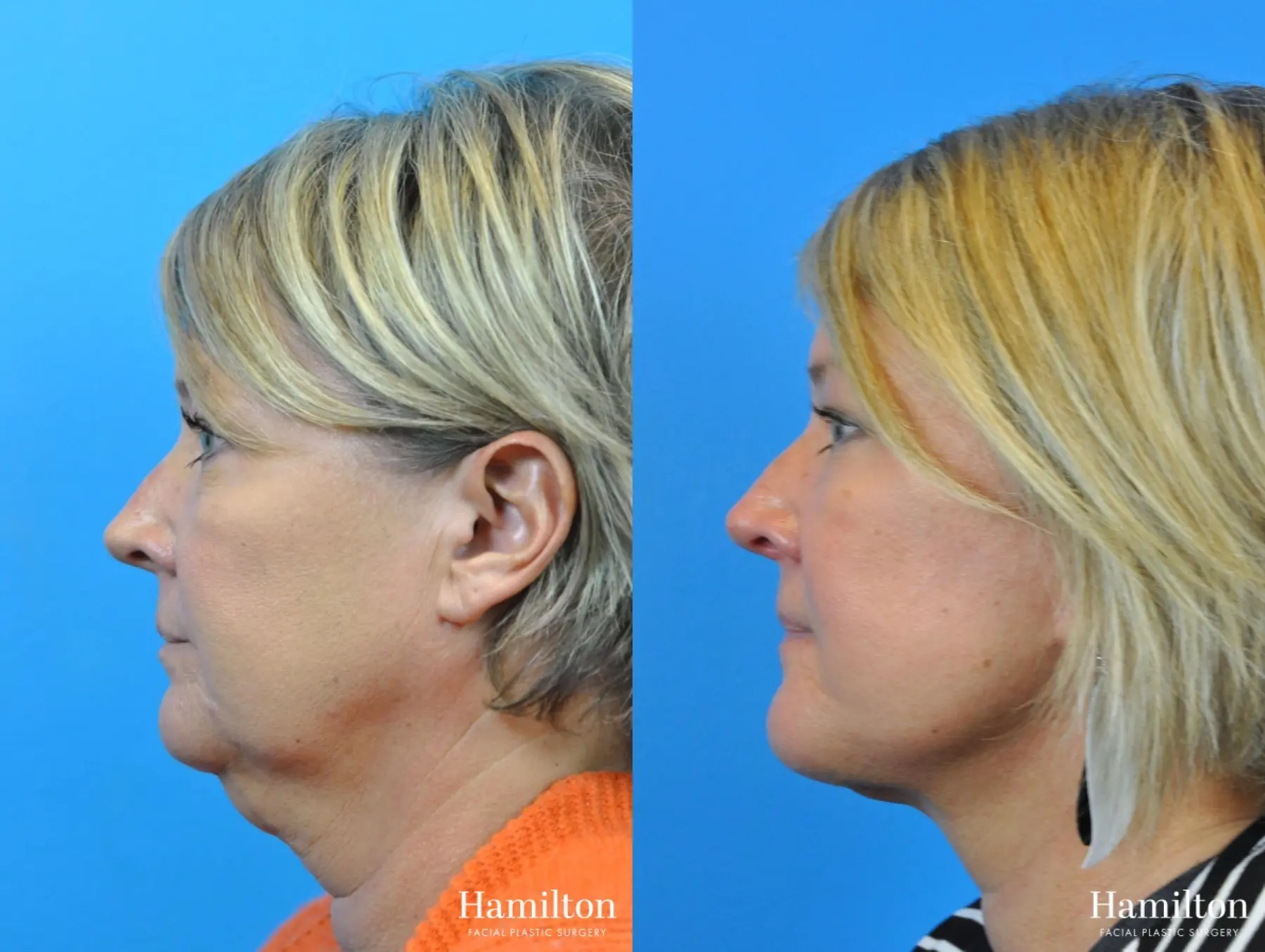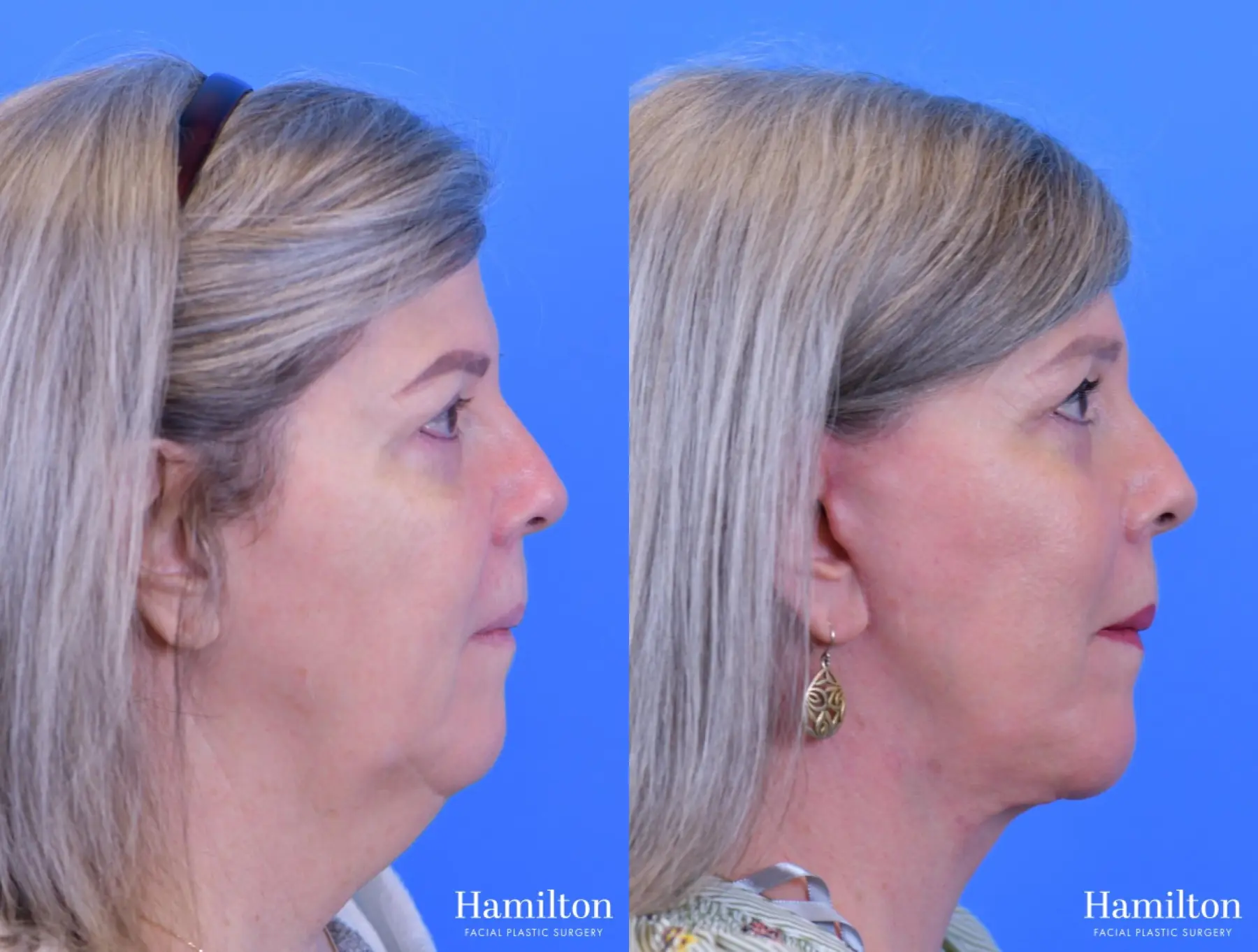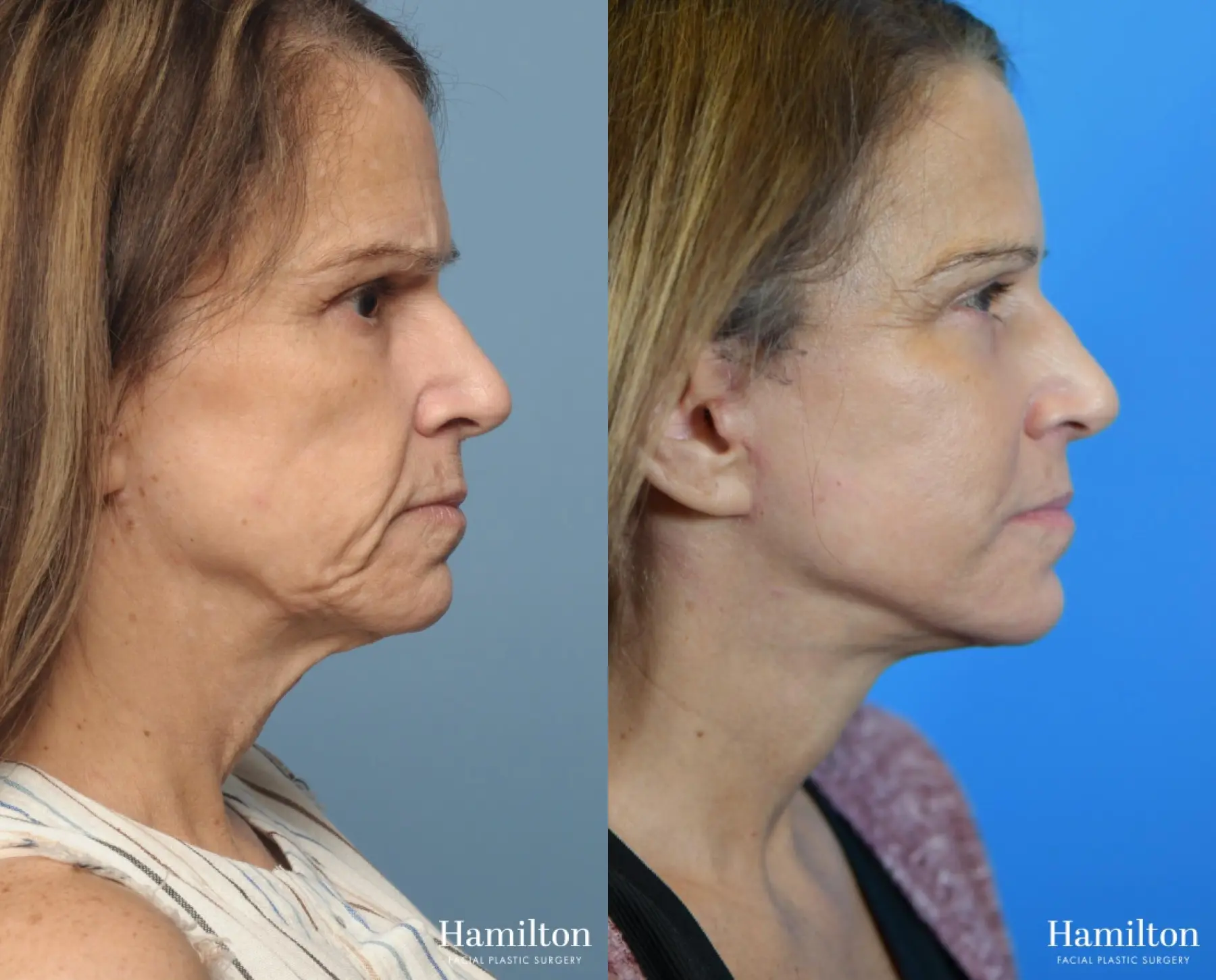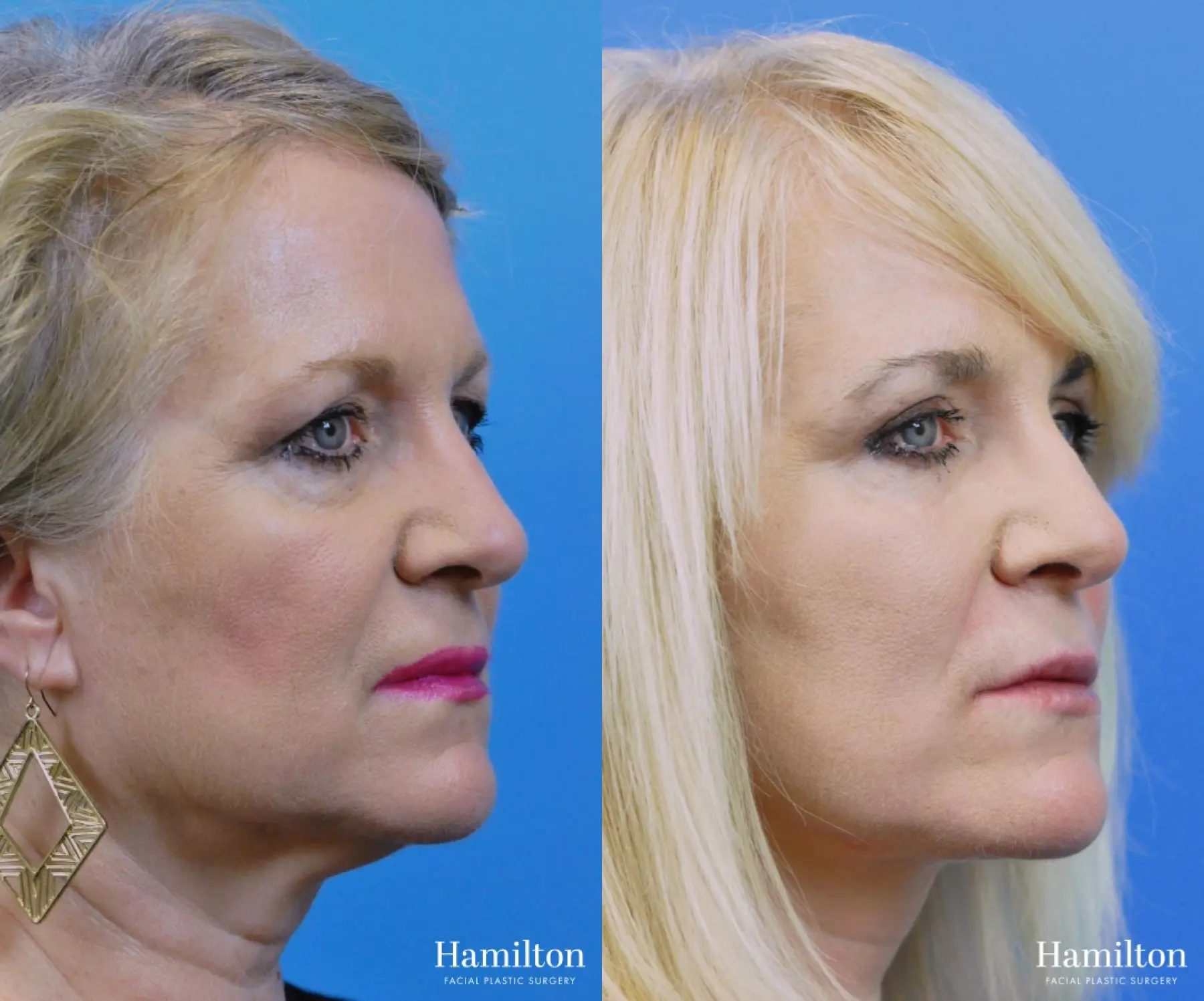Facelift in Indianapolis, Indiana
It’s not possible to stop the aging process altogether, however, fortunately, it is possible to turn back the hands of time with a facelift. This surgery, known technically as rhytidectomy, is the third most popular cosmetic surgery procedure performed today. While it cannot put a stop to the aging process, the surgery can help you to look your best by restoring a more youthful appearance. Located in Carmel and Greenwood, Hamilton Facial Plastic Surgery, led by double board-certified facial plastic surgeon Mark M. Hamilton, M.D., F.A.C.S., offers facelifts for men and women who live in and around Indianapolis, Indiana.
What Is A Facelift?
A facelift is a procedure that helps tighten the skin in the face and reduce the appearance of wrinkles. It can also help define the neck.

How Much Does a Facelift Cost in Indianapolis, Indiana?
Hamilton Facial Plastic Surgery seeks to make facial surgery procedures available and affordable for everyone. To accomplish this, we accept cash, major credit cards and personal checks for a facelift.
Who Is The Ideal Candidate For A Facelift?
The ideal candidate for a facelift is someone who is healthy and has just started to show signs of aging. People who want to get a facelift should also have realistic expectations. While a facelift can help a person look younger, it will not stop the aging process.
Before and After Pictures
Watch Our Facelift Results Video
What Do I Need To Do Before A Facelift?
Before you get a facelift, you will need to schedule a consultation with your plastic surgeon. Your plastic surgeon will discuss your health history as well as your goals. Before pictures may also be taken.
What Should I Expect On The Day Of My Facelift?
Once you check into the surgery center, your vital signs will be checked. You will also have to put on a gown. Additionally, your face will be marked with a marker.
How Long Does It Take To Perform A Facelift?
The amount of time that it takes to perform a facelift can vary from patient to patient. However, it typically takes between two and four hours to perform. A facelift is performed under IV sedation or general anesthesia.
How is a Facelift Performed?
During the surgery, excess skin is removed, underlying muscles are tightened, and the skin is redraped. This helps to improve sagging facial skin, jowls, and loose neck skin.
Incisions usually begin above the hairline at the temples and continue in front of and behind the ears. Working through the incisions, the skin is lifted, and the underlying muscle and membrane are tightened. The skin is then pulled tight, and any excess skin is removed. A small incision may also be made under the chin to allow excess fat from the neck and chin to be trimmed or suctioned.
What To Expect After A Facelift?
You will most likely be allowed to go home shortly after you get your facelift. However, you will have to take it easy for several days after your surgery. You can expect some discomfort and swelling after your surgery. The discomfort should subside within one to two weeks. However, it may take several weeks for the swelling to subside. You can begin to return to your normal activities as your swelling and pain decrease.
Most patients are able to return to work in two weeks. However, you will have to wait at least three weeks before resuming strenuous activity.
Will I Have Scars After Getting A Facelift?
Because incisions are required to perform a facelift, scars will form. However, your plastic surgeon will make the incisions in places where scars can easily be hidden, such as behind the ears. The scars will also become less visible as they heal.
When Will I See The Results?
The results of this procedure will become more apparent once most of the swelling goes down a few weeks after your facelift. The final results of a facelift will typically be seen within three to six months, which is when all of the swelling goes away completely.
How Long Will The Results Of A Facelift Last?
Everyone ages differently, so the amount of time a facelift lasts can vary. Most patients will appreciate the benefits of the procedure for the rest of their lives.
Post Operative Facelift Instructions
Introduction
The following is a list of general instructions for your care following your surgery. Please read them carefully several times as most of your questions should be answered here. Instructions for your care will also be reviewed the morning after surgery. Carefully following these instructions should help you get the best results from your surgery.
After Surgery
Following your surgery you will be sent home with a dressing to be worn overnight as well as drains that need to be tended to. Care for these drains will be reviewed prior to you leaving the hospital/surgery center. The night following surgery it is important for you to have someone with you—this is a must! You should plan on remaining within thirty miles from the location of your surgery for this first night. It is also important for you to keep your head elevated the evening after surgery as well as for the first two weeks following surgery. This can be done by either sleeping in a recliner tilted at 45 degrees or sleeping with two pillows underneath the head. Avoid rolling onto your face. Sleeping on your back for the first two weeks after surgery helps to ensure this.
Daily Care
This care will be reviewed the morning following your surgery:
- Go over suture lines four times daily with hydrogen peroxide on a Q-tip both in front of your ear as well as behind it. After this again with a Q-tip apply a liberal amount of Bacitracin (other antibiotic ointments such as Neosporin are acceptable) ointment.
- You may shower the second day following surgery and should shower everyday following this. Be sure to use a gentle shampoo such as Johnson’s Baby Shampoo.
- Be sure to report immediately any signs of bleeding that persist after ten minutes of direct pressure, infection, redness, fever, unusual drainage, or pain.
- Stitches and staples will be removed at the one week point except for one stitch, which will remain in the ear lobe until day ten to fourteen.
What to expect
Swelling
Swelling will vary both patient-to-patient as well as side-to-side. Swelling may actually increase the first three to four days before subsiding. Most of your swelling should resolve over the first two to three weeks. Do expect, however, to have minor fluctuations in the remaining swelling over the course of the next two to three months. Things to do to minimize this swelling include keeping your head elevated as much as possible over the first two to three weeks; avoid bending over or heavy lifting for the first three weeks, and avoiding prolonged sun exposure for the first two to three months.
Discoloration
Bruising will vary like swelling from person to person as well as side-to-side. Most bruising and discoloration should resolve over the first two weeks. Make up, with Dr. Hamilton’s permission, can be applied ten days to two weeks after surgery.
Numbness
Most of your face will be numb following surgery. This is normal and will subside over the coming weeks to months. Unusual sensations, pins and needles, and occasionally mild discomfort may occur as these nerves regenerate over time.
Restrictions
- No strenuous exercise for at least two weeks
- No heavy lifting for three weeks.
- No head turning activities or exercises for four weeks.
- Hair coloring should be delayed for four weeks after surgery.
- No “pull-over” clothing for two weeks.
- Avoid hard chewing foods for two weeks.
- Avoid yawning or wide mouth opening for two weeks.
- No driving for one, preferably two weeks after surgery.
Finally
The healing time for facelift surgery is often less than expected and the results are worth the wait. While swelling should be completely gone after four to six weeks, your healing will continue for the entire first year. I will follow you through this entire process, but be patient.
Please do not hesitate to ever contact our office.

